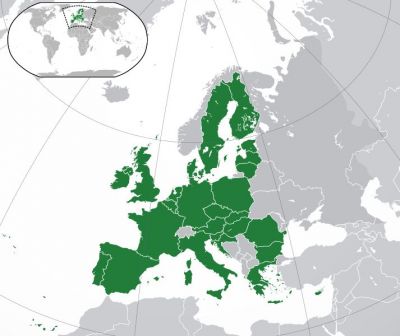Helping Countries Develop
As supporters to the UN Millennium Development Goals, the EU is
committed to helping developing countries reap the benefits of
technology. EU-funded ICT research collaborations are helping to meet
these goals.
For example, the VOICES project uses readily available mobile phone
technology to improve lives in Mali and Senegal, by expanding access to
information about healthcare and food production. In areas where
literacy is low and many different languages are spoken, VOICES allows
people to access vital information using text-to-speech and
speech-to-text technology.
‘In Mali, the applications developed by the VOICES project have
helped farmers to sell their products [while] consumers have been able
to learn about new products on the market,’ says Ardiel Cabrera, VOICES
project officer. ‘In Senegal, the project has developed an application
that makes communication between hospitals easier, quicker and more
effective. This helps to fight the outbreak and spread of diseases.’
‘VOICES demonstrated the absolute need for cooperation to achieve
results.’ says Mr Stéphane Boyera, project coordinator. ‘The research
team from Europe have more experience in terms of technology, but have
no knowledge at all about the [local] context.’
The project has been so successful in delivering low-cost but
effective solutions that the mobile telecoms provider, Orange, is set to
continue the project in collaboration with the Ministry of Health in
Senegal.
Safeguarding Agriculture
The E-AGRI project also has an impact in North Africa. The E-AGRI
technology was first developed to support the European Union’s Common
Agricultural Policy, using observations of climate and remote sensing to
predict crop growth. Now, working with project partners in Morocco and
China, the project is improving food security.
According to project coordinator, Dr Qinghan Dong, ‘the technology…
helps local producers and governments to make early decisions on their
agricultural production planning. As a result they can strike the
balance between supply and demand and ultimately prevent low prices from
hurting farmers' incomes, and manage international agricultural
commodity trading.’
Understanding the Human Brain
The Human Brain Project (HBP) FET Flagship gathers a large
consortium of 112 partner organisations, mostly from Europe but also
from the USA, Japan, and China and is involving world leading experts.
The project aims at combining all existing knowledge and data about the
human brain and to develop theory and realistic computer models to run
on specially designed supercomputers. The resulting “virtual brain”
offers the prospect of a fundamentally new understanding of the human
brain, developing new treatments for brain diseases and building
revolutionary new computing technologies.
The HBP nicely complements the US' own Brain Initiative, another
large-scale research initiatives focussing on the better understanding
of the human brain and its diseases. The US is developing new technology
to generate brain data leading to a map of the human brain, while the
EU is integrating brain data in computer models to simulate the human
brain. The data helps build the models and the models help interpret the
data. Therefore, the US and EU brain research efforts complement well
each other. Establishing collaboration would be natural and timely.
Neelie Kroes, Vice-President of the European Commission called for
such collaboration between the two projects. She welcomed the on-going
discussions between the European Commission and various US counterparts
saying that "understanding the human brain should not only be a
scientific priority, it should also be a political one." Planning is now
underway to organise two workshops to explore concrete areas of
collaboration, the first one in Washington DC in November 2014 and the
second in Brussels in spring 2015.
Fighting Disease and Maintaining Biodiversity
In South America, collaborations with EU FP7 projects are leading to healthier populations and healthier ecosystems.
The PODI-TRODI project is a partnership between researchers from
Germany, France, Italy, Finland, Portugal and five partners in Brazil.
Together, these researchers are developing a low-cost, portable
diagnosis tool that can detect tropical diseases like Chagas disease,
which is the fourth leading cause of death among tropical diseases. The
developers also intend to adapt the system to detect leishmaniasis,
dengue, malaria and HIV.
The PODI-TRODI tool will help bring healthcare to communities that
don’t have access to hospital facilities. What’s more, as tropical
diseases become more prevalent as a result of climate change, the device
will be needed in more and more markets.
Elsewhere in Brazil, the EUBrazilOpenBio project is breaking down
international barriers in biodiversity research. The project offers
researchers in Europe and Brazil access to collections of biodiversity
data. It also makes available a suite of online tools that allow
biodiversity scientists to collaborate on research that crosses national
borders. One of the difficulties with biodiversity research is the lack
of internationally agreed-upon study methods or data descriptions.
EUBrazilOpenBio aims to change all that by creating a set of tools that
can be used by researchers anywhere in the world.
Sharing Data, Systems and Networks
At present, the EU is at the cutting edge of grid and cloud
technologies; two approaches to sharing ICT infrastructure. By
remaining at the forefront of this technology, EU industry is
maintaining its competitive edge in
this EUR 3.5 billion market .
The CLOUT and FELIX joint Japanese and EU research projects - are
creating new internet-based technologies that will help researchers and
other organisations to share massive amounts of data in real time, and
to work on shared projects using a common set of resources.
Likewise, CHAIN-REDS brings together researchers in Europe, Latin
America, the Middle East, India and China to create virtual research
communities. Scientists can share tools that they have built, data and
even computing power with collaborators around the globe, using the
project’s set of tools.
Meanwhile, GEANT brings together researchers and educators in the
Americas, Africa and the Middle East, and the Asia Pacific region with
dedicated, high-speed connectivity between countries. Researchers in
Medicine, Physics, Energy and Environmental science can share data and
applications at speeds of up to 100 gigabits per second, one hundred
times faster than typical broadband speeds.

